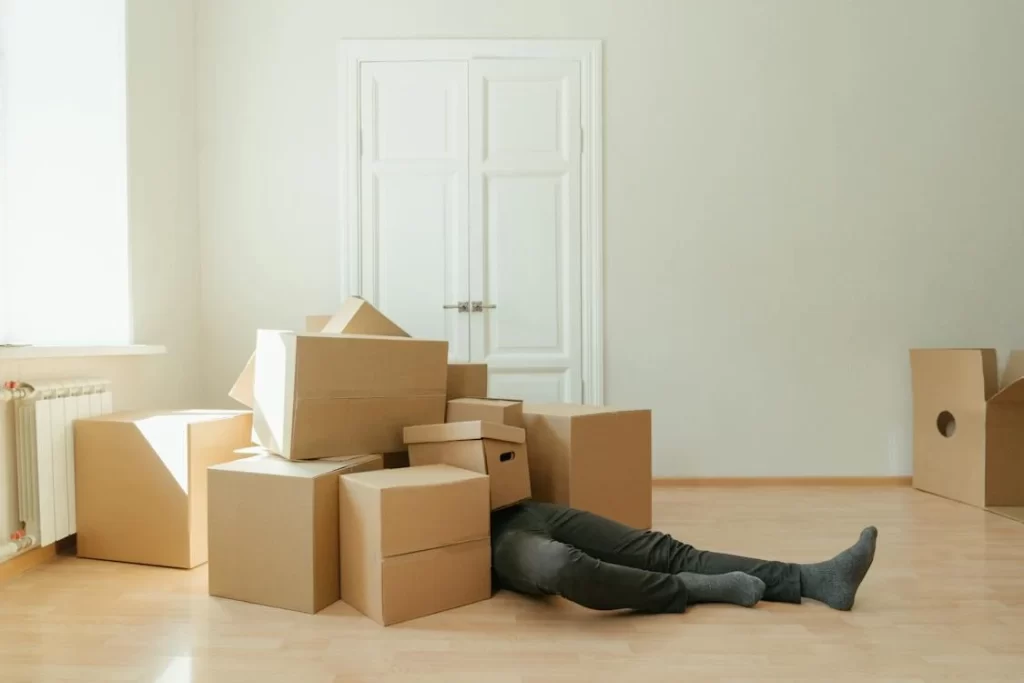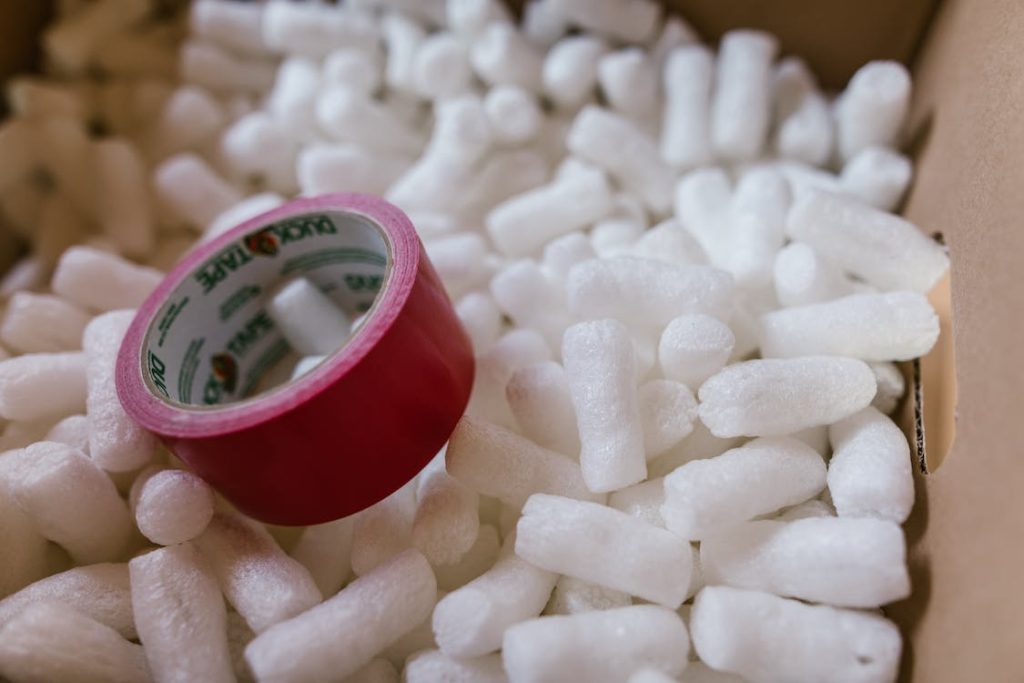In today’s fast-paced world, the need for temporary storage solutions is becoming increasingly common. Whether you’re moving to a new city, renovating your home, or just need some extra space, understanding how to properly store your belongings is essential. This comprehensive guide, brought to you by Top Sacramento Moving Company, will walk you through everything you need to know about preparing your items for temporary storage. From selecting the right storage unit to packing your belongings securely, we’ve got you covered.
The Growing Need for Temporary Storage
With the rise in mobility and changing living circumstances, more people are turning to temporary storage as a solution for managing their belongings. Short-term storage can be incredibly convenient during transitional periods such as moving, renovation, decluttering, and seasonal storage. Each of these scenarios presents unique challenges and requirements, making it crucial to plan effectively.
Moving
During a move, especially one that involves relocating to a different city or state, there is often a gap between moving out of your old home and moving into your new one. Temporary storage provides a safe place to keep your belongings during this period. It also helps reduce the stress of moving by allowing you to stage your move, making it more manageable.
Renovation
Home renovations can be chaotic and messy. Using temporary storage during this time keeps your furniture and personal items safe from dust, debris, and potential damage. It also provides more space for contractors to work efficiently, ensuring that your renovation process goes smoothly.
Decluttering
Sometimes, homes simply become too cluttered. Whether you’re preparing to sell your home and need to stage it, or you just want to reclaim your living space, temporary storage is an excellent solution. It allows you to remove non-essential items from your home without permanently getting rid of them.
Seasonal Storage
Certain items, such as holiday decorations, winter clothing, or summer sports equipment, are only needed at specific times of the year. Storing these items temporarily can free up valuable space in your home and keep everything organized and easily accessible when needed.
Importance of Proper Storage
Storing your belongings properly is crucial to prevent damage, loss, and deterioration. Whether you’re storing valuable items, sentimental possessions, or everyday goods, taking the time to prepare and pack them correctly will ensure they remain in good condition until you need them again. Proper storage techniques can protect your items from moisture, pests, and other potential hazards.
Preventing Damage
Items stored improperly can suffer from a range of damages, including scratches, dents, and breakage. Using appropriate packing materials and techniques is essential to prevent such damage. Additionally, choosing the right storage environment, such as a climate-controlled unit, can protect sensitive items from temperature and humidity fluctuations.
Avoiding Loss
Losing track of your belongings is a common issue during storage. Proper labeling and inventorying of your items can prevent this problem. Detailed labeling and maintaining an inventory list ensure that you can quickly find and retrieve any item when needed.
Maintaining Value
Proper storage not only prevents damage but also helps maintain the value of your items. This is particularly important for valuable or sentimental possessions. By storing them correctly, you ensure they remain in the same condition as when you packed them, preserving their worth.

Choosing the Right Storage Unit
Assessing Your Storage Needs
Before you start packing, it’s important to assess your storage needs. Consider the volume of items you plan to store to determine the size of the storage unit you’ll need. Make a detailed inventory of what you plan to store. Assess whether you need a climate-controlled unit, especially if you have items sensitive to temperature and humidity, such as electronics or antique furniture. Also, consider the duration of storage as longer storage durations might necessitate more robust storage solutions.
Volume of Items
The first step is to calculate the amount of space you will need. Make a comprehensive list of all the items you plan to store. This includes furniture, boxes, and any other belongings. Use this list to estimate the total volume of items, which will help you determine the size of the storage unit required.
Duration of Storage
The length of time you plan to store your items can affect your choice of storage unit. For short-term storage, a standard unit may suffice. However, for long-term storage, you may need additional features such as climate control to protect your items from environmental factors over time.
Type of Items
Consider the type of items you will be storing. Delicate or valuable items may require specific storage conditions. For example, electronics, artwork, and antiques often need climate-controlled environments to prevent damage. Understanding the needs of your items will help you choose the right type of storage unit.
Types of Storage Units
There are several types of storage units to choose from, each offering different features.
Climate-Controlled Units
Climate-controlled storage units maintain a consistent temperature and humidity level, making them ideal for storing sensitive items such as:
- Electronics
- Antiques
- Musical instruments
- Photographs
These units protect your belongings from extreme temperature fluctuations and moisture, which can cause damage over time. Climate-controlled units are essential if you live in an area with significant temperature variations or high humidity.
Standard Storage Units
For items that are less sensitive to environmental changes, standard storage units are a cost-effective option. These units are suitable for storing items such as:
- Furniture
- Books
- Kitchenware
- Clothing
Standard units are typically more affordable and provide adequate protection for most household items. They are an excellent choice for short-term storage or items that do not require specific environmental conditions.
Portable Storage Units
Portable storage units are a flexible and convenient option, especially if you need to move items frequently or store them on your property temporarily. These units can be delivered to your location, filled at your convenience, and either stored on-site or transported to a storage facility. Portable units offer the flexibility of accessing your items without traveling to a storage facility, making them ideal for temporary storage during moves or renovations.
Security Features to Look For
When selecting a storage facility, security should be a top priority. Look for features such as:
- 24/7 Surveillance Cameras: Continuous monitoring of the facility to deter theft and vandalism.
- Gated Access with PIN Code: Controlled entry ensures that only authorized individuals can access the facility.
- On-Site Security Personnel: Physical presence of security guards to enhance safety.
- Individual Unit Alarms: Additional protection for each storage unit to alert of unauthorized access.
Ensuring your storage facility has robust security measures in place will give you peace of mind that your belongings are safe.
Packing Your Belongings for Storage
Gathering Packing Supplies
Proper packing begins with having the right supplies. Ensure you have sturdy boxes in various sizes, high-quality packing tape, bubble wrap, packing paper, furniture covers, moving blankets, labels, and markers. Having the right materials on hand will make the packing process smoother and more efficient.
Sturdy Boxes
Using sturdy boxes is crucial to protect your items during storage. Opt for boxes made of high-quality cardboard that can withstand stacking and handling. Avoid using worn-out or flimsy boxes, as they may collapse under the weight.
Packing Tape
Invest in strong packing tape to seal your boxes securely. High-quality tape ensures that your boxes remain closed and intact during transportation and storage. It also provides extra reinforcement to the box seams, preventing them from coming apart.
Bubble Wrap and Packing Paper
Bubble wrap and packing paper are essential for protecting fragile items. Wrap each item individually to cushion them from impacts. Use packing paper for less delicate items and bubble wrap for highly fragile objects. This layering provides added protection against breakage.
Furniture Covers and Moving Blankets
Furniture covers and moving blankets protect large items such as sofas, tables, and mattresses from dust, dirt, and scratches. Covering your furniture helps maintain its condition and prevents damage during storage.
Labels and Markers
Clearly labeling your boxes is essential for organization. Use markers to write the contents of each box and its intended room. This makes it easier to locate items when you need them and ensures that boxes end up in the right place during unpacking.
Packing Techniques for Different Items
Furniture should be cleaned and dried to prevent mold and mildew. Disassemble large pieces if possible to save space and reduce the risk of damage. Use furniture covers or moving blankets to protect surfaces from scratches and dust. Store furniture vertically to maximize storage space.
Electronics are sensitive to temperature and humidity changes. If available, use the original packaging for the best protection. Remove any batteries to prevent leakage and corrosion. Wrap electronics in bubble wrap to protect delicate parts and secure with tape. Label all cables and accessories to make reassembly easier.
For clothing and textiles, ensure all items are clean and completely dry before packing. Use vacuum-sealed bags to save space and protect against moisture. Store items in plastic bins rather than cardboard boxes for added protection. Place mothballs or cedar chips in bins to deter pests.
Fragile items require extra care to prevent breakage. Wrap each item in bubble wrap or packing paper. For dishes and glassware, use cardboard dividers in boxes. Clearly mark boxes with fragile items and indicate which side should face up. Use packing peanuts or crumpled paper to fill gaps and prevent movement.
Labeling and Inventory
Keeping track of your belongings is crucial for easy retrieval and organization. Clearly label each box with its contents and the room it belongs to. This will make it easier to locate items quickly and ensure boxes end up in the right place in your new home. Creating a detailed inventory list is also beneficial. Document all items and their box numbers to keep track of your belongings and ensure nothing gets lost.

Organizing Your Storage Unit
Strategic Placement
How you arrange your storage unit can impact the accessibility and safety of your items. Create aisles between boxes and furniture for easy access. Place heavier items on the bottom to prevent crushing lighter items. Keep items you might need to access frequently near the front. This strategic placement ensures you can easily find and retrieve items when needed.
Creating Aisles
Leaving pathways between rows of boxes and furniture allows you to move around your storage unit easily. These aisles make it possible to access items at the back without having to unload the entire unit. Plan your layout with accessibility in mind to save time and effort later.
Storing Heavy Items Low
Placing heavier items on the bottom ensures that they do not crush lighter or more delicate items. This not only protects your belongings but also provides a stable base for stacking. Avoid overloading shelves or stacking boxes too high, as this can create safety hazards.
Maximizing Space
To make the most of your storage unit’s space, consider using shelving units to stack boxes vertically. This helps maximize floor space and keeps items organized. Stack boxes of similar sizes to create stable towers. Fill empty spaces between larger items with smaller ones to ensure no space is wasted.
Using Shelving Units
Installing shelving units in your storage unit can significantly increase your storage capacity. Shelves allow you to stack boxes and items vertically, utilizing the height of the unit. This organization method also makes it easier to access individual items without having to move everything around.
Filling Empty Spaces
Make use of all available space by filling gaps between larger items with smaller boxes or objects. This not only maximizes your storage unit’s capacity but also prevents items from shifting during storage. Ensure that all items are packed securely to avoid damage.
Climate Control and Ventilation
Even if you’re not using a climate-controlled unit, proper ventilation can help protect your items. Leave space around boxes to allow for air circulation. This prevents moisture buildup and keeps your items dry. Use pallets to raise items off the floor and prevent moisture damage.
Allowing for Air Circulation
Air circulation is crucial for preventing mold and mildew. Leave small gaps between boxes and walls to allow air to flow freely. Avoid packing items too tightly together, as this can restrict airflow and create a humid environment.
Using Pallets
Placing items on pallets raises them off the ground, protecting them from moisture that can seep through the floor. This is particularly important if your storage unit is located in a basement or an area prone to flooding. Pallets provide an added layer of protection for your belongings.

Long-Term Storage Considerations
Protecting Against Pests
To keep pests out of your storage unit, seal all boxes tightly with packing tape. Avoid storing food or perishable items that might attract pests. Using traps or pest deterrents like mothballs or cedar chips can also help keep pests at bay. Regularly checking your unit for signs of pests can prevent infestations from becoming a serious problem.
Sealing Boxes
Ensure that all boxes are sealed tightly with high-quality packing tape. This prevents pests from entering and protects the contents from dirt and dust. Double-check the seals periodically to ensure they remain intact.
Avoiding Food Storage
Never store food or perishable items in your storage unit. These items can attract pests and create unpleasant odors. Stick to non-perishable goods and items that are less likely to attract unwanted attention.
Moisture and Humidity Control
Moisture and humidity can cause significant damage to stored items. Use silica gel packets or other desiccants to absorb moisture. If possible, use a dehumidifier in your storage unit to control humidity levels. Storing sensitive items in waterproof plastic bins can provide an extra layer of protection against moisture.
Using Desiccants
Desiccants like silica gel packets help absorb excess moisture in the air. Place these packets in your boxes and bins to protect your items from humidity. Replace the desiccants periodically to ensure they continue to function effectively.
Dehumidifiers
If your storage unit allows, consider using a dehumidifier to maintain optimal humidity levels. Dehumidifiers remove excess moisture from the air, preventing mold and mildew growth. This is especially important in humid climates or for long-term storage.
Regular Maintenance
Even in temporary storage, it’s important to check on your items periodically. Inspect your unit for signs of damage or pest activity. Rotate items occasionally to ensure even wear and air circulation. Keeping your inventory list up-to-date with any changes will help you stay organized and ensure all items are accounted for.
Periodic Inspections
Regularly inspect your storage unit for any signs of damage or pest activity. Catching problems early allows you to address them before they cause significant harm to your belongings. Check for leaks, mold, and any signs of infestation.
Rotating Items
Rotate items occasionally to ensure even wear and prevent any items from becoming damaged due to prolonged pressure or lack of ventilation. Moving items around also helps you keep track of your belongings and maintain an organized storage unit.
Preparing for Retrieval
Easy Access to Important Items
If you know you’ll need to retrieve certain items during the storage period, plan accordingly. Place items you’ll need at the front of the unit for easy access. Ensure boxes containing important items are clearly labeled. Arrange items by how frequently you’ll need to access them to make retrieval easier.
Front-Loading Important Items
Store frequently needed items at the front of the storage unit. This saves time and effort when you need to access them. Clearly label these boxes for quick identification.
Labeling for Easy Retrieval
Use clear, descriptive labels on all boxes. Include the contents and the room they belong to. This makes it easier to find specific items without having to open multiple boxes. Keeping an inventory list with box numbers and contents can also streamline the retrieval process.
Safe Transportation
When it’s time to retrieve your items from storage, ensure their safe transportation. Use proper equipment like dollies, hand trucks, and moving blankets to move items safely. Make sure your vehicle can accommodate the items you’re retrieving. If boxes or packing materials have degraded, repack items for safe transport.
Using Proper Equipment
Dollies and hand trucks make it easier to move heavy items without straining yourself. Moving blankets protect your items during transport, preventing scratches and dents. Ensure you have the right equipment to make the retrieval process smooth and safe.
Repacking Degraded Materials
If you notice that boxes or packing materials have degraded over time, take the time to repack your items. This ensures they remain protected during transport and prevents any damage caused by weakened materials. Investing in new boxes and packing supplies is a small price to pay for preserving the integrity of your belongings.
Managing Stress During the Storage Process
Staying Organized
Staying organized throughout the storage process can significantly reduce stress. Follow a detailed checklist to ensure nothing is overlooked. If possible, delegate packing and organizing tasks to family or friends. Staying flexible and prepared to adapt your plan as needed can help you stay on track.
Using a Checklist
Create a detailed checklist of tasks to be completed during the storage process. This helps you stay organized and ensures that nothing is forgotten. Break down larger tasks into smaller, manageable steps to make the process more manageable.
Delegating Tasks
If possible, enlist the help of family or friends. Assign specific tasks to each person to streamline the process. Having extra hands can make packing and moving more efficient and less stressful.
Taking Breaks
Packing and moving can be physically and mentally exhausting. Remember to take breaks to recharge. Schedule short breaks during the packing process to stretch, hydrate, and clear your mind. Staying hydrated and practicing mindfulness techniques like deep breathing can help you stay calm and focused.
Importance of Breaks
Taking regular breaks prevents burnout and keeps your energy levels up. Use breaks to stretch your muscles, drink water, and have a snack. This helps maintain your physical and mental well-being during the stressful moving process.
Asking for Help
Don’t hesitate to ask for help if you’re feeling overwhelmed. Enlist the help of friends and family for packing and moving tasks. Hiring professional movers can also be a great option for assistance with heavy lifting and transportation. Storage facility staff can provide tips and assistance if needed.
Utilizing Professional Movers
Professional movers have the experience and equipment needed to handle the packing and transportation of your belongings efficiently. Hiring movers can alleviate a significant amount of stress and ensure that your items are handled with care.

Conclusion
Recap of Key Tips
Preparing for temporary storage requires careful planning and attention to detail. Key tips include:
- Choosing the Right Storage Unit: Assess your needs and select a unit with appropriate features.
- Packing Properly: Use the right supplies and techniques to protect your belongings.
- Organizing Your Unit: Arrange items strategically for easy access and space maximization.
- Long-Term Considerations: Protect against pests, control moisture, and maintain your unit.
Choose Top Sacramento Moving Company To Help You Move into Storage
If you’re preparing for temporary storage and need assistance, trust Top Sacramento Moving Company to help you every step of the way. Our professional movers are experienced in packing, transporting, and storing belongings with care and efficiency. Contact Top Sacramento Moving Company today for a free quote and make your storage process smooth and stress-free!
